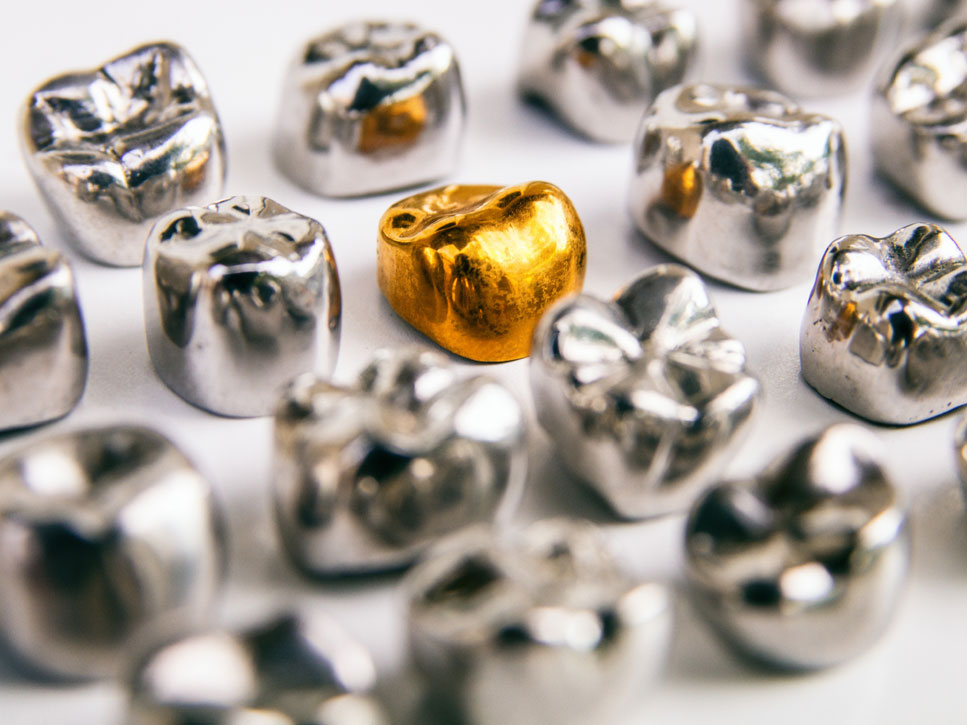
Porcelain, Gold, and Metal Crowns: What Does a Prosthodontist Recommend?
Dental Crowns are laboratory fabricated restorations which would be cemented on your teeth.
Dental crowns indications:
- Root canal treated tooth
- Crack tooth
- Broken teeth
- Teeth with extensive caries
- Mis-shape teeth
- Malformed teeth
- Worn teeth
- Teeth with erosion
- Teeth with attrition
- Chipped teeth
- Full mouth rehabilitation/reconstruction
What materials dental crowns are made from?
Dental crowns can be fabricated of Porcelain/ceramic, Gold alloys (white/yellow) or combination of both (metal ceramic crowns).
What are Gold Crowns?
Gold and gold alloy crowns may appear silver or gold in color. These crowns rarely chip or break. They do not wear down easily and require minimal tooth removal to be applied. These crowns are very durable and can last for decades.
But with their metallic color, gold alloys are the least natural-looking crown material. Some people choose to put gold alloy crowns on upper molars that are out of sight. It is recommended for patients with high caries risks and patients who has strong bites or bruxism habits.
What are the main advantages of the dental gold crown?
- Does not break.
- Better tooth adaptation
- Does not wear.
- Durability
When a gold crown is recommended for a tooth:
- Esthetic is not the concern, back teeth crowns.
- People with high cavity risk
- People with parafunction habits/ people who grind and clench teeth.
- Lack of enough inter dental space to accommodate a ceramic crown thickness.
- Teeth with gum recession
What are Porcelain Crowns?
Porcelain crowns are a popular type of all-ceramic crown. They are the most natural-looking option. High strength ceramics are made of Zirconium dioxide. This makes the crown very durable while maintaining the more natural appearance of porcelain. Because they look so natural, porcelain crowns are most often used on front teeth, which tend to be the most visible to others.
People with metal allergies can wear this type of crown comfortably with no risks of an adverse reaction.
Are dental ceramics being different in term of the strength?
New dental ceramics such as Zirconia have polycrystalline structure which makes them very strong under the functional forces and are recommended for the back teeth crown or people who grinds or clench their teeth.
Other type of ceramics such as e max/ Lithium Disilicate provide better esthetics but have less strength and are advised for front teeth crowns/veneers.
What are Metal Ceramic Crowns
Porcelain is bonded to a base made of precious metal, such as gold. These crowns are strong and natural looking. But sometimes the metal beneath the porcelain cap is visible as a dark line.
These crowns have weak spots that can chip or break. They tend to wear out the teeth opposite them.
Who is the best dentist for a dental crown?
Prosthodontics are expert specialists with advanced training on dental materials and dental crowns. They will evaluate your case carefully and will design your esthetic ceramic crown based on your bite for better outcome.



